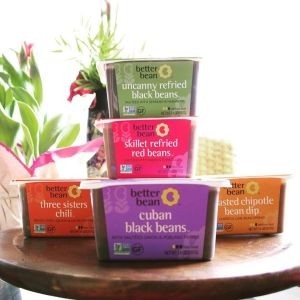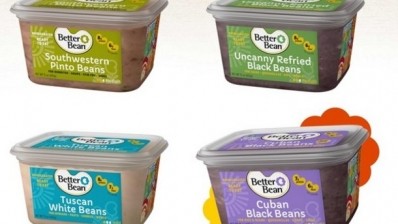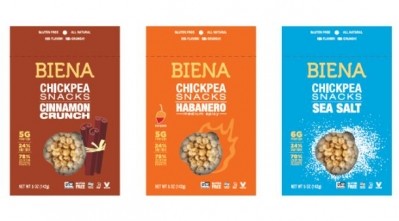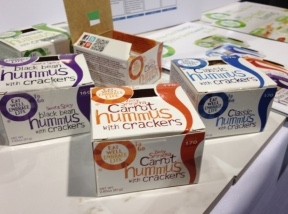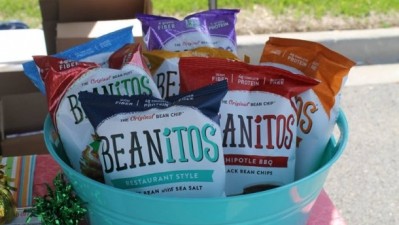Better Bean Co. offers a fresh new take on the plant-based protein trend
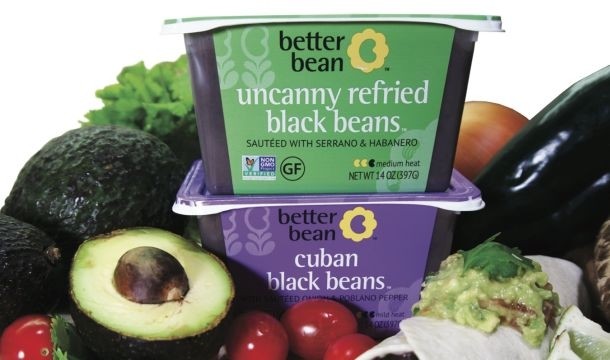
Now having grown 10 times since its first investment round (after which it also completed a successful CircleUp fund raise in 2013), Better Bean is sold in about 1,000 stores across the country, including Whole Foods Market, Wegmans Food Markets and Safeway.
As consumers increasingly seek plant-based proteins for a variety of reasons, Better Bean hopes they’ll head for the refrigerated section.
“Our mission is to inspire people to eat more beans from a health and sustainability standpoint,” Hannah Kullberg, co-founder and marketing director, told FoodNavigator-USA. “Beans are amazing for our bodies in terms of gut health, lowering cholesterol and managing blood pressure and blood sugar—and they’re a more sustainable protein source than meat.
“We talk about all those benefits with consumers. But we also want to be a regular part of people’s diets. And we realize that in this market, while there are a lot of bean lovers making beans every week, there are still many people who are wary of beans.”
Better Bean’s seven varieties include Tuscan white beans, Cuban black beans, refried black beans, skillet refried red beans, Southwest pinto beans, roasted chipotle bean dip and Three Sisters chili. The small-batch cooking process is based on founder (Hannah’s father) Keith Kullberg’s original recipe, which he perfected in college and started selling at Portland’s Hollywood Farmers Market in the spring of 2010.
Despite beans’ inherent benefits (Better Bean’s products are also Non-GMO Project certified, gluten-free and free of the eight major food allergens), they come with a few hard-to-shake consumer perceptions: that they’re a cheap, often bland commodity food with certain, ahem, digestive side effects.
Moreover, because there’s no refrigerated department dedicated to fresh beans, Better Bean often gets placed next to hummus or salsa—which can compound consumer confusion over whether it’s just another bean dip. (Only the roasted chipotle beans have “dip” in their name.)
People know what to expect with hummus, not fresh beans
So how does a fresh bean brand whose products retail for $3.99 per 14-oz. tub entice consumers to trade up from their $0.69 canned whole beans to its Tuscan white beans for soup, or from canned refried pintos to skillet refried red beans for taco night?
Demos and sampling, Kullberg said.
“With hummus people have a better idea of what to expect, so they’ll buy it once and see if they like it,” she said. “But people don’t know what to expect with our beans, so they need a nudge to try it. I’ve had people come up to me at events and say, ‘I saw this on the shelf and didn’t buy it because didn’t know how it would taste.’ So it’s crucial that people taste them and see how versatile they are.”
That’s why Better Bean has invested a big portion of its budget hiring brand ambassadors in its markets around the country, who primarily host in-store sampling and demo events to show consumers how to incorporate the product into meals like huevos rancheros, soups, burritos and quesadillas.
“They’re focused on growing awareness and sales and creating repeat customers,” Kullberg said. “We actually find we can make money from doing demos. One demo can create five weekly customers, who will in turn support that store. We’ve also seen big impact from them finding local influencers in their area, like food bloggers, who will tell friends.”
A great game-day dip for one, vegan cooking option for another
And yet, Better Bean’s customers find the brand through a wide range of entry points, from health- and sustainability-minded millennials to cost-conscious families, vegans and athletes to meat eaters, and single people to couples.
“We have a really broad base of regular customers,” Kullberg said. “So it’s about crafting that message for all those people—that we’re a great dip for game day to one person, low-sodium cooking option to another, or vegan and clean to another.”
Maintaining quality by keeping a lid on growth
The potential for broad appeal and repeat purchasing—not to mention the higher sales rings than canned beans—has made Better Bean an easy sell among store buyers, and partly why it was able to court industry giants Whole Foods and Wegmans so early, Kullberg said. But the brand has been deliberately measured in its approach to growth given the challenges of scaling a labor-intensive product with a limited shelf life.
Each batch still starts with cooking down beans with fresh sautéed vegetables and caramelized onions for rich umami flavor. Refried bean products all skillet-refried. Ingredients like apple cider vinegar and fresh lime juice act as natural preservatives (giving the beans their 11-week shelf life) in addition to reducing sodium levels and partially breaking down the beans so they’re easier to digest. It takes anywhere from two to three hours before the beans are placed in tubs.
“Before we opened our own manufacturing facility, we had a lot of advisers saying we should hand off the manufacturing piece to a copacker and focus on marketing, but that never felt quite right to us because we felt like we’d lose authenticity and the closeness to our product,” Kullberg said, noting that her father still tastes the beans each week for quality. “At the same time, we have a lot more cost that goes into making our beans.”
The people’s health food
Working only in chilled distribution networks is also tough on a growing food business, which is why Better Bean has had to win business from big buyers right away in order to justify expansion.
“We can’t have one little independent bring us into a region,” she said. “We need bigger stores like Whole Foods and Wegmans to get us into the warehouse so it makes sense for that distributor to carry our product. But because of the back-end work required and because we’re still a smaller company, it’s been a benefit to us because we’ve been able to grow our roots more strongly in the regions we’re in and grow a strong fan base so we’re not spread too thin too quickly.”
Still, as interest broadens for plant-based, non-GMO, all-natural food options “even in rural communities, which previously haven’t been as interested,” Kullberg said fresh beans have the kind of broad appeal that can make them a household staple.
The tide is changing and we want to be part of that for people’s diets,” Kullberg said. “We hope eventually to see taco centers and dedicated fresh bean the way it’s happened for health products like kombucha, I like to think we’re more of the people’s food than a product like kombucha, something people can feel comfortable eating regularly that also brings so many benefits.”

